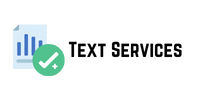The most common frequency of delivery among EC businesses is “five or more times a week (5.0-6.9 emails/week),” which, when combined with “daily delivery,” accounts for nearly half of the total at 46.4%.
Next is “twice or more a week (2.0-4.9 emails/week)” at 26.8%, and “once or more a week (1.0-1.9 emails/week)” at 14.6%.
More than 90% of businesses overall deliver email newsletters at least once a week, with the average being “once every two days.”
The frequency of delivery varies depending on the business.
The figure below shows the frequency of japan whatsapp data messages sent by business category, with the most frequent being “apparel” at 1.6 messages per day.
“Apparel, miscellaneous goods, and home appliances” are sent more frequently, as they primarily send visual images of sale items, seasonal products, and coordinated product suggestions.
The most common delivery time is between 6pm and 7pm. It seems that email newsletters target at business people returning home are effective, and this has not chang since 2015. HTML format is also the most common format for email newsletters, accounting for 78.9% of all email newsletters, more than three-quarters of the total.
Things to keep in mind when sending English email newsletters through cross-border e-commerce
There are very few overseas email tracking social media metrics is critical newsletters that are text only.
Email newsletter is a Japanese-English word, and overseas it is call “E-Zine”, “E-mail Magazine” or “Email News Letter”, and most are in HTML format.
One thing to note about the “subject” and “body” is that “!” is a forbidden word in the subject line. If you use this word in the subject line, there is a high chance that the email will be sort into the spam folder. Also, the body of the email is rarely text-bas, and is mostly graphically image-bas and in HTML format.
The key to sending overseas e-mail newsletters is to display images dynamically and visually to enhance their appeal, and to create e-mail newsletters that convey what you want to convey at a glance.
The mission of e-mail newsletters
Is to show the content, not make the business sale lead reader read it, and to lead them to the site with a good layout of images and CTA buttons.
It is also essential to provide a URL that allows easy unsubscription.
The common method of unsubscribing is to unsubscribe with one click on the unsubscription URL. It is important to note that there is no method like sending a cancellation email that says “If you no longer wish to receive emails, please reply to this email with a note that no reply is necessary” as is commonly seen in Japan.
